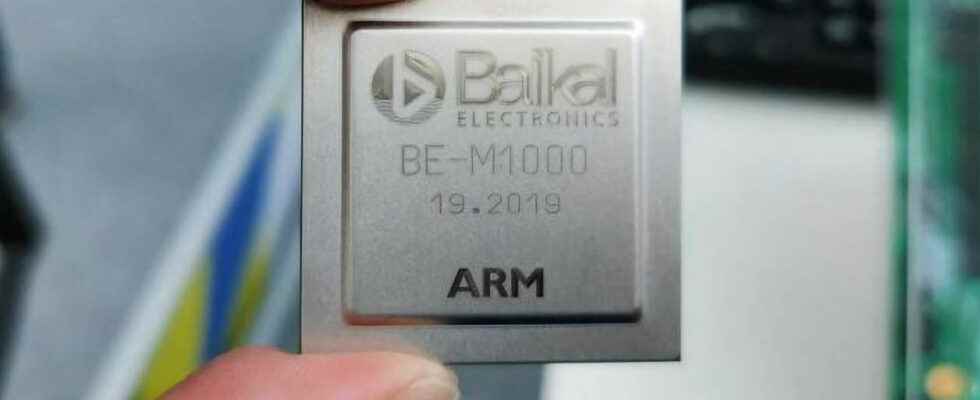The British government is adding one more provision to the technological blockade imposed on Russia by placing two of its companies on a blacklist.
Among the 63 companies targeted by the approach, we find Baikal Electronics and MCST (Moscow Center of SPARC Technologies), the two Russian flagships in terms of domestic processor design. We have also spoken to you on several occasions about the Elbrus chips from MCST, chips far from being at the cutting edge of technology, but which at least have the merit – for a country at war – of being able to be sovereign… or almost .
Because ARM remains for the time being a company under British law which sells its plans and licenses to hundreds of companies. Even during Huawei-Gate, ARM did not cut ties with the Chinese company. But this time, the British government has made a decision and ARM has no choice but to comply with this decision.
A very backward and dependent Russian industry
In addition to blockages of American chip exports (Intel, AMD), there is therefore the impossibility of designing and producing chips with ARM instruction sets.
On paper, Russia could ignore the sanctions and produce its own chips on its territory with the plans it already has. But even that is impossible for him.
Although obsolete by current standards – modern chips oscillate between 10 and 5 nm – the Baikal and MCST chips are still 28 nm and 16 nm designs. However, the best production lines identified in Russia produce in 90 nm! While the Russian government approved a 3.19 trillion ruble (43.5 billion euros) plan in April to develop its own semiconductor industry, analysts believe that it would take until 2030 at best to see it happen. the first chips… in 28 nm!
Read also: Sovereign Russian processor is still too bad to replace chips from Intel and AMD
The country still relies on foreign companies for their production. With Japan at ‘war’ for decades over the Kuril Islands, South Korea and Taiwan aligned with US positions, China is the only resort – which is sure to add to Russia’s dependence against the Middle Kingdom.
If China is late compared to Taiwan and South Korea, its mastery up to 14 nm is largely sufficient for Russia which is even further behind in its designs. In theory, Russia can therefore continue to produce chips… but it cannot develop its future without having access to ARM’s plans. Which highlights its reliance on a foreign ISA (instruction set).
RISC V for the future?

Late in production and far behind in the mastery and technological sovereignty of its chips, Russia could make the same pivot as India. The subcontinent announced last December its technological independence plan centered around the RISC-V instruction set.
Read also: India bets on RISC-V and local factories to design its own chips
On paper, it is the perfect ISA for Russia: the project has been placed under the protection of a foundation under Swiss law. Which allows it, on paper, to be beyond the reach of government blockades like ARM can be in the UK.
Also see video:
Also see video:
A shift easier said than done. Besides the fact that it takes hundreds or even thousands of engineers to master an ISA, it should also be added that while RISC V is on the rise, it is not as mature as x86 and ARM. These two ISAs both benefit from several decades of development, both in terms of architectural complexity, software, development tools, qualified production chains, etc.
Banning access to ARM is therefore one more thorn in the side of Russia, which seems very far from being able to access a domestic semiconductor industry.
Source : BleepingComputer
